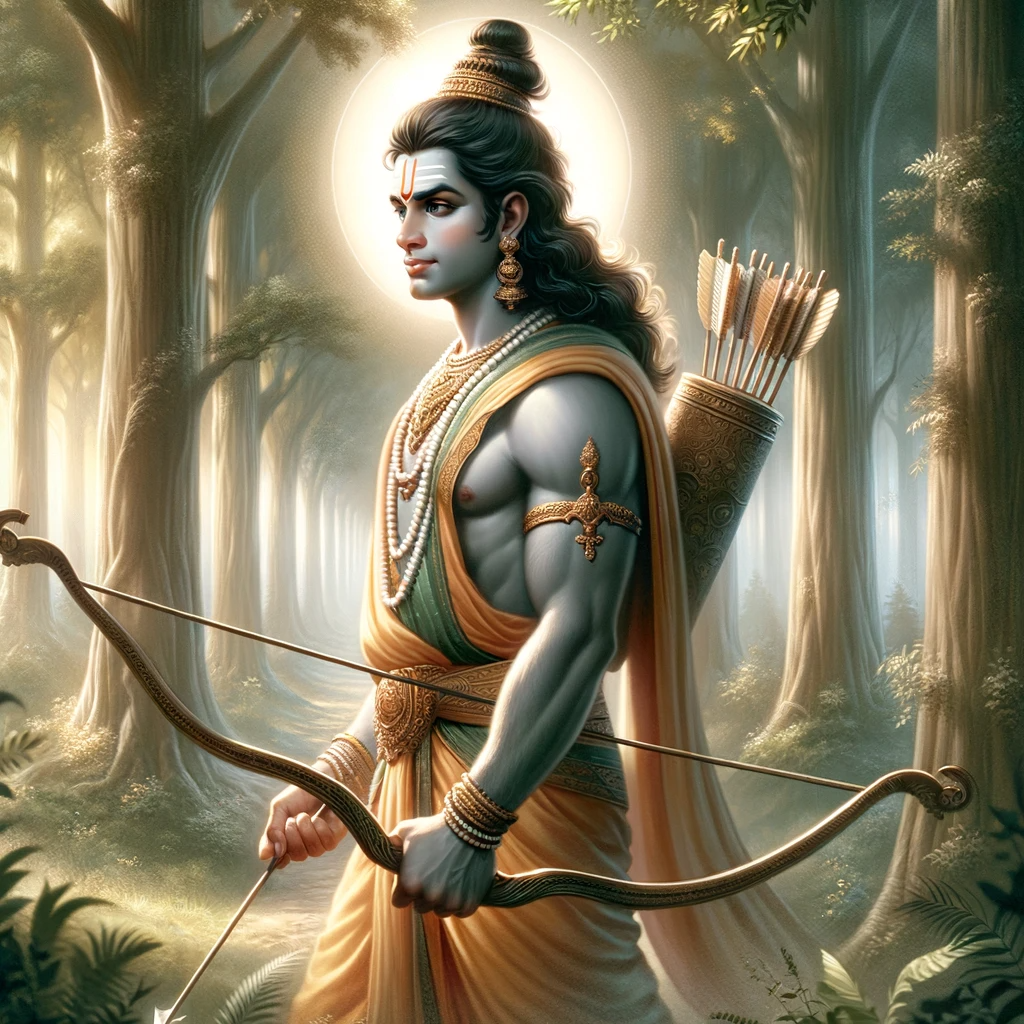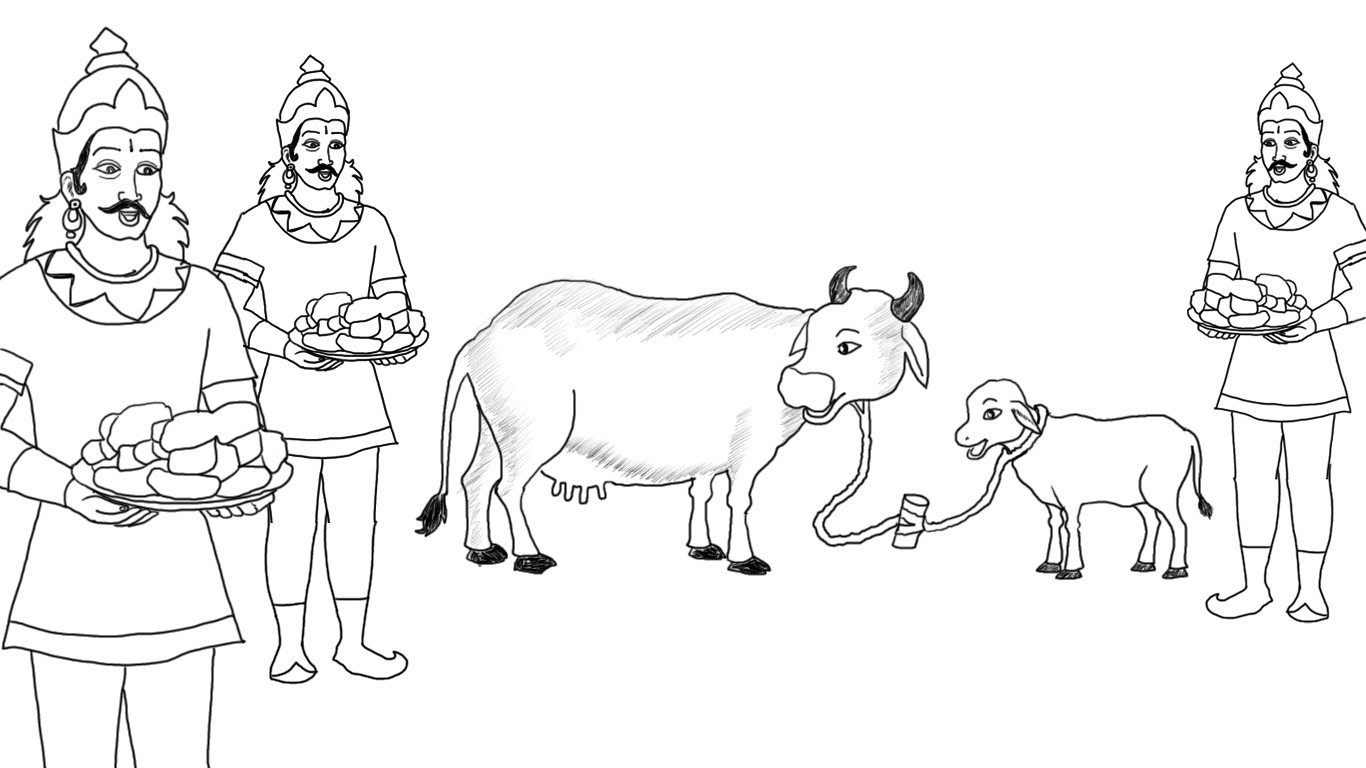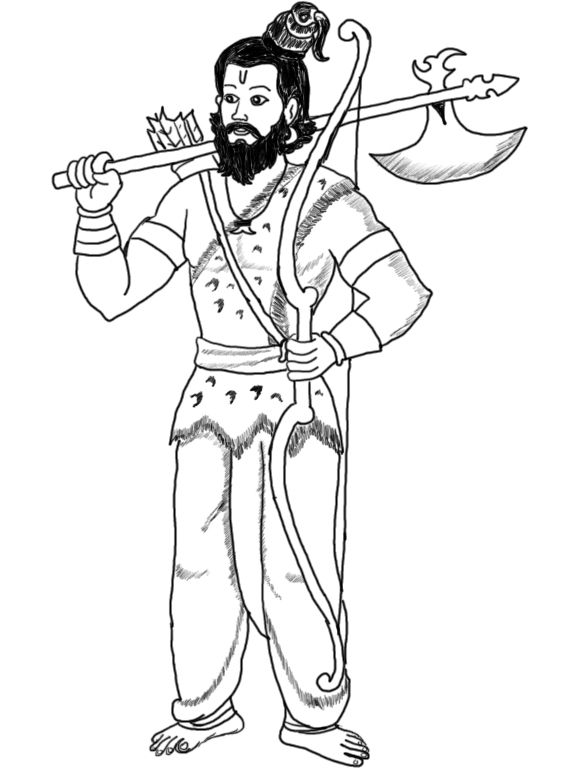The Enduring Legacy of Lord Rama: Symbolism and Life Lessons

The tale of Parshuram is usually thought of as one of anger, revenge, and violence, but first and foremost it is a tale of social justice.
Even though Parashuram has popularly been credited with having waged a war against and Kshatriya clan, in truth an older and more accurate version of the story suggests that his revenge was not limited to the Kshatriya clan. He killed the “adharmi” - the wrong doers - no matter their clan, cast or family.
He is rightly called the god of justice. As a sixth incarnation, this was Vishnu's answer to the thousands of humans who had started defiling Mother Earth for personal gain.
But beyond the lessons and symbolism, there is also a thrilling and captivating story behind Parashuram and his revenge. So let’s start from his birth and childhood...
Parashuram was born to the Brahman sage Jamadagni and the princess Renuka. After pleasing Lord Shiva with intense meditation, Parshuram received an axe, which he carried with him in battle.
His name literally means "Rama with an axe". He learned methods of war and other combat skills from Lord Shiva as well.
Parshuram's father had a cow named Surabhi. She was the daughter of Kamdhenu and could provide any material desire that was wished for. Learning about the cow, the invincible King Arjuna demanded the holy sage to hand over the cow to him. This wasn't acceptable to sage Jamadagni but Arjuna simply could not take no for an answer and resorted to petty theft.
Upon learning about the theft, Parashuram, overwhelmed with rage, stormed to the kingdom to retrieve the innocent cow. An army met the blade of his axe, and what remained was a pile of metal and bodies with a still furious Parshuram heading ahead.
Having the blessings of Lord Shiva, nothing stood in his way and he finally killed the invincible Arjuna, hence establishing justice with his axe and fury.

When Parashuram informed his father of all the violence that had resulted from the confrontation, sage Jamadagni reprimanded him for his actions. He reminded Parashuram that a Brahmin must never kill a king and asked him to repent for his actions by taking a pilgrimage.
Parshuram obliged without hesitation. He only returned when he heard the cries of his mother. Parshuram returned to find his ashram burnt down and all the holy sages prosecuted. His mother was crying beside the severed head of his father whose body had twenty-one cuts.
Parshuram learned that this was an act of revenge performed by Arjuna's sons. He picked up his axe with rage-fueled hands and moved on to cut down all warriors that dare oppose his path.
Equipped with an unparalleled battle acumen and knowledge of the art of combat, he killed all of Arjun's sons and all that tried to defend them.

The cycle of revenge did not end there. He is known to have gone around the world twenty one times killing all that was unworthy of the blessings bestowed upon them by Mother Earth.
His axe did not rest till all the warriors he faced were defeated and dead. After the twenty-first cycle, all the wrongdoers in the world seemed to be expunged.
Five lakes were filled with the bodies of these warriors. Parshuram took his now bloodstained axe and flung it into the sea. The horrors faced by the axe made the sea recoil. A new coast was created which is now known as the Konkan and the Malabar.
He tried to pass his teachings of warfare on to the later generations but none would accept them. Parshuram knew that times will arise when the order must be restored so he raised dead priests and taught them the art of war to balance the scales of justice.
These priests came to be known as Chitpavan, meaning "purified from the funeral pyre".
The legendary anger of Parashuram once was met by the calm and soft dedication and sincerity of Ram, Vishnu’s seventh avatar.
This remarkable incident took place at the palace of King Janak during the Swayamvar of goddess Sita. Ramayana mentions this incident in the Bala Kanda, when Rama and Lakshman are participating in Sita’s swayamvar.
As the legend goes, Lord Parashuram had once given the great Shivdhanush - Shiva’s bow - to King Janak as a gift. King Janak later used the Shivdhanush as a challenge for Sita’s swayamvar - that whoever shall be able to lift the bow and tie its strings shall marry princess Sita.
While many kings and princes weren’t even able to move the bow, Rama successfully tied its strings and ended up accidentally breaking the bow.
When Parashuram received the new of his beloved Shiva’s bow being broken by Rama, he reached King Janak’s court, furious and destructive, ready to kill whoever dared to break Shiva’s bow.
When he finally laid eyes on Rama, the calm and wise young face of his calmed down the anger of Parashurama as he realised he was looking at none other than himself. Realising Ram is the avatar of Lord Vishnu, Parashuram blessed him and returned to his place without harming anyone.

The tale of Parshuram is heavy with metaphors and symbolism. Not only do they brilliantly display the cycle of revenge and how vicious it can be, but also present a commentary on those who have gone to the extreme end of materialism.
The cow, Surbhi, is a metaphor for Earth, how she along with the Sun can provide everything that humans desire. However, the lack of a grateful outlook towards her can lead to an early demise for all we hold dear.
All that Arjuna had to do was show empathy and care towards the Surbhi and the sage but he instead resorted to petty theft and greed.
Parshuram is a symbol of violent justice in our universe. While it is true that the universe we live in is a silent one, it is also true that it is capable of extreme violence and hence the very little time we have must be spent being grateful to the Earth that shelters us from it.
Shores are created and shores are taken back. It is of no consequence to the universe but it is so to you. Other themes that the story explores are that of the impulse of anger, the cycle of revenge and the importance of dhyana repentance.
Get weekly updates on the newest articles, quotes and newsletters right in your mailbox. Subscribe now
